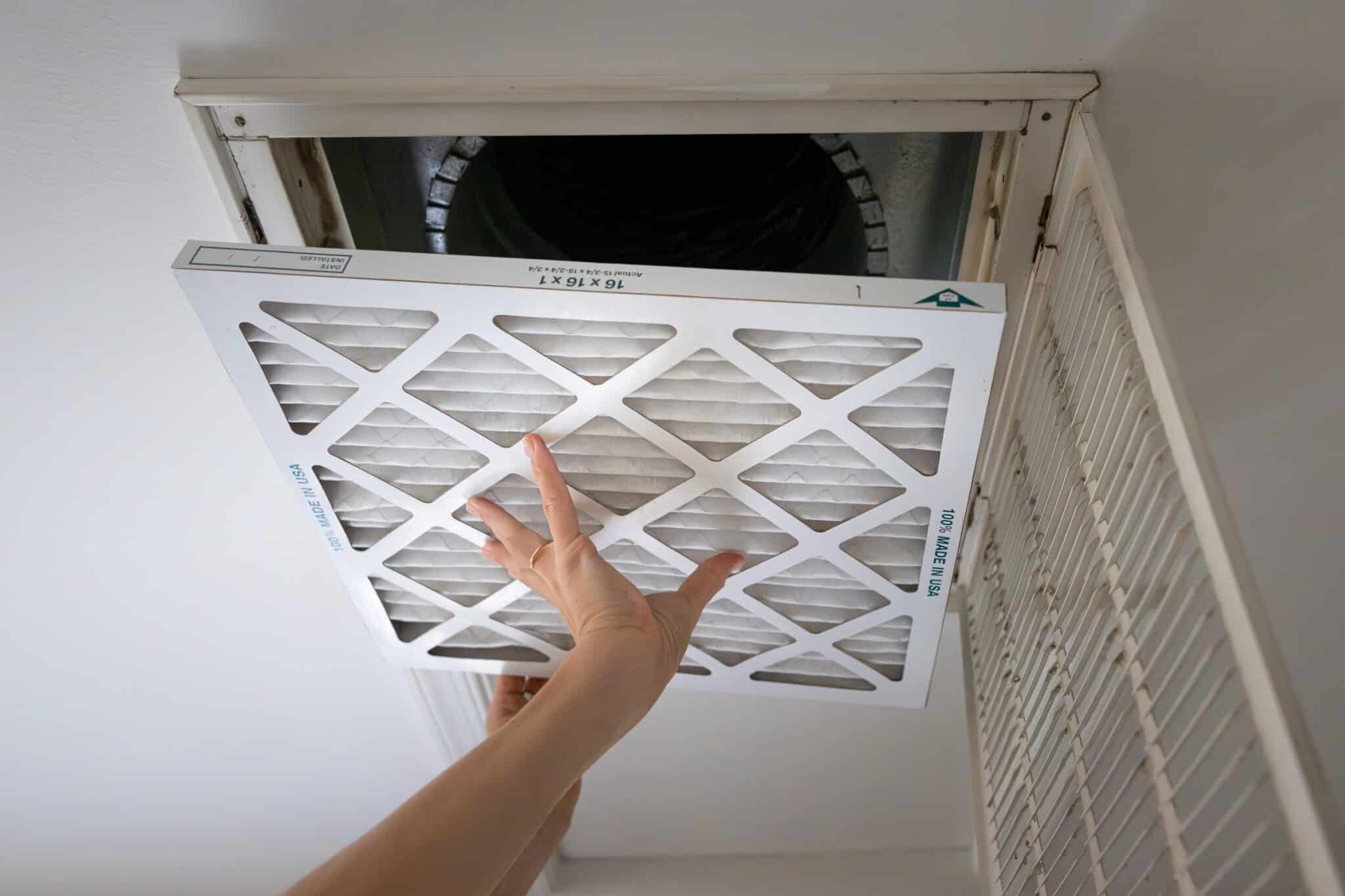Your air ducts play a crucial role in keeping your home comfortable year-round. They distribute heated or cooled air throughout your space, ensuring consistent temperatures. However, if your ductwork is neglected or damaged, it could be the reason your energy bills are higher than expected. Many homeowners don’t realize that inefficient air ducts can force their HVAC systems to work much harder than necessary, leading to wasted energy and higher costs.
When air ducts have leaks, blockages, or poor insulation, your heating and cooling system struggles to maintain the desired temperature. This extra strain leads to increased energy consumption, which directly affects your utility costs. Even small issues like minor leaks or dirt buildup can create airflow problems that impact the system’s efficiency. Over time, this can lead to frequent repairs or even premature HVAC system failure.
Many homeowners in Springtown, TX may not realize that their air ducts are a hidden source of energy waste. The problem is that ductwork is often out of sight, making it easy to overlook. But if you’ve noticed higher energy bills, uneven temperatures in your home, or weak airflow from vents, your duct system could be the culprit.
In this article, we’ll explore how air ducts impact HVAC efficiency, common problems that lead to energy loss, and the signs that indicate your ductwork needs attention. By understanding these issues, you can take the right steps to improve efficiency, lower your energy costs, and keep your home comfortable year-round.
How Air Ducts Affect HVAC Efficiency
Your air ducts are the circulatory system of your home’s heating and cooling setup. When they work efficiently, they deliver warm or cool air to every room without unnecessary energy waste. However, if your ductwork has leaks, blockages, or poor design, it can significantly impact your HVAC system’s performance.
One of the biggest issues with inefficient air ducts is restricted airflow. If ducts are clogged with dust and debris, or if there are bends and kinks in the system, air cannot travel freely. This forces your HVAC system to work harder, using more energy to push air through. Over time, this extra strain can lead to increased wear and tear, potentially shortening the lifespan of your heating and cooling equipment.
Leaks in the ductwork also contribute to energy waste. When conditioned air escapes before reaching its destination, your HVAC system has to compensate by running longer cycles. Studies by the U.S. Department of Energy estimate that up to 30% of heated or cooled air can be lost due to leaks in poorly maintained duct systems. This means that a significant portion of the energy you pay for never even reaches your living space.
Another issue is poor duct insulation. If air ducts pass through unconditioned spaces like attics or crawl spaces, they can lose or gain heat along the way. This results in uneven temperatures throughout your home and forces the HVAC system to overwork to maintain comfort. Proper insulation helps reduce these losses, improving both efficiency and indoor comfort.
By ensuring your air ducts are clean, properly sealed, and well-insulated, you can improve energy efficiency and lower your utility bills. In the next section, we’ll explore the most common air duct problems that contribute to higher energy costs.

Common Air Duct Problems That Increase Energy Bills
Several issues with your air ducts can lead to higher energy bills. These problems often go unnoticed because ductwork is hidden behind walls, ceilings, or attics. However, even minor issues can significantly impact your HVAC system’s efficiency and drive up energy costs.
1. Leaky or Disconnected Ducts
Leaks in the duct system are one of the most common causes of energy waste. Small gaps, cracks, or disconnections allow conditioned air to escape before reaching its intended destination. This forces your HVAC system to work harder to compensate for the lost air, increasing both energy usage and wear on the system. If your home has older ductwork, leaks are more likely due to natural aging and deterioration.
2. Poor Insulation Leading to Energy Loss
Ducts that pass through unconditioned spaces, such as attics, basements, or crawl spaces, need proper insulation. Without it, heated or cooled air can lose its temperature before reaching your living spaces. In the summer, hot attic air can warm the cool air traveling through the ducts, making your AC work harder. In the winter, heated air can cool down before reaching the rooms, forcing your heating system to run longer cycles.
3. Clogged or Dirty Ductwork Restricting Airflow
Dust, pet dander, mold, and other debris can accumulate inside air ducts, restricting airflow. When airflow is blocked, your HVAC system must push harder to distribute air, consuming more energy in the process. Dirty ducts can also reduce indoor air quality, leading to potential health issues for those with allergies or respiratory conditions.
When left unaddressed, these air duct problems can lead to long-term energy waste, higher utility bills, and unnecessary strain on your HVAC system. In the next section, we’ll discuss the warning signs that indicate your air ducts may be costing you money.
Signs That Your Air Ducts Are Costing You Money
If your air ducts are not functioning efficiently, your HVAC system will struggle to maintain comfort while using more energy than necessary. Since ductwork issues are not always visible, homeowners in Springtown, TX should be aware of these warning signs that indicate their ducts may be driving up energy bills.
1. Unusual Spikes in Energy Bills
One of the clearest signs of inefficient air ducts is a sudden increase in your energy costs. If your usage habits haven’t changed, but your utility bills keep climbing, your HVAC system could be compensating for lost air due to duct leaks, blockages, or poor insulation.
2. Uneven Temperatures Throughout the Home
Are some rooms in your home significantly warmer or colder than others? This can indicate that certain areas are not receiving enough airflow due to leaks or obstructions in the ductwork. An efficient system should distribute air evenly, ensuring consistent temperatures in every room.
3. Weak Airflow from Vents
If air isn’t flowing strongly from your vents, there may be an issue with blocked or undersized ducts. Restricted airflow forces your HVAC system to run longer, using more energy to achieve the desired temperature. Over time, this can also put unnecessary stress on your heating and cooling equipment.
4. Excessive Dust Buildup Around Vents
If you notice a layer of dust accumulating near your vents or throughout your home, your air ducts may be circulating dust and debris instead of clean, filtered air. Dirty ductwork can reduce HVAC efficiency and contribute to respiratory issues for those with allergies or asthma.
Recognizing these warning signs early can help you address air duct issues before they lead to major energy waste and costly repairs. In the next section, we’ll explore how dirty air ducts impact both energy efficiency and indoor air quality.
How Dirty Air Ducts Impact Air Quality and Efficiency
When air ducts are dirty, they don’t just affect indoor air quality they also reduce the efficiency of your HVAC system. Over time, dust, pet dander, mold, and other debris accumulate inside the ductwork. This buildup restricts airflow, making it harder for heated or cooled air to circulate throughout your home. As a result, your HVAC system must work harder to maintain comfortable temperatures, leading to higher energy consumption and increased utility costs.
Another issue with dirty air ducts is that they can circulate airborne contaminants. If you’ve noticed more dust in your home, frequent allergy symptoms, or an increase in respiratory issues, your ductwork may be spreading pollutants rather than filtering them out. When ducts are clogged with dirt and debris, they can also create an ideal environment for mold growth. Once mold spores enter the airflow, they can spread throughout your home, further compromising indoor air quality.
Dirty ducts can also lead to overheating or freezing of your HVAC components. When airflow is restricted, the system must operate longer to reach the desired temperature. This extra strain increases wear and tear on essential components, potentially leading to premature breakdowns or costly repairs. Additionally, blocked ductwork can cause the system’s air filter to clog more quickly, further reducing efficiency.
Keeping air ducts clean helps improve both air quality and energy efficiency. Regular HVAC maintenance, including professional duct inspections, can ensure your system runs smoothly while keeping your home’s air fresh and free of contaminants. In the next section, we’ll discuss the importance of proper air duct insulation and how it can prevent energy loss.
The Importance of Proper Air Duct Insulation
Proper insulation is essential for maintaining the efficiency of your air ducts. Without it, conditioned air can lose or gain heat as it moves through the ductwork, causing temperature inconsistencies and forcing your HVAC system to work harder. This added strain increases energy consumption, leading to higher utility bills. Homes in Springtown, TX, where temperatures can fluctuate throughout the year, benefit greatly from well-insulated ducts that help maintain a stable indoor climate.
Uninsulated or poorly insulated air ducts are especially problematic in areas like attics, crawl spaces, and basements. These unconditioned spaces expose ducts to extreme temperatures, causing significant energy loss. During the summer, hot attic air can warm up the cool air traveling through the ducts, reducing the effectiveness of your air conditioning. In the winter, heated air can lose warmth before reaching your living spaces, forcing your heating system to run longer cycles.
Condensation is another issue caused by improper insulation. When warm and cool air interact inside the ducts, moisture can form, leading to mold growth and structural damage. Over time, this not only reduces air quality but also weakens the duct system, increasing the likelihood of leaks and inefficiencies. Proper insulation acts as a barrier, preventing heat transfer and minimizing the risk of moisture buildup.
Upgrading or repairing duct insulation is a cost-effective way to improve HVAC efficiency and reduce energy waste. Homeowners who invest in professional air duct insulation often notice improved comfort, lower energy bills, and fewer temperature fluctuations. In the next section, we’ll explore how air duct leaks contribute to hidden energy loss and what can be done to fix them.
Why Air Duct Leaks Are a Hidden Energy Drain
Leaks in your air ducts can be a major source of energy waste, leading to higher utility bills and reduced comfort. When air escapes through cracks, holes, or disconnected sections, your HVAC system must work harder to compensate for the lost airflow. This extra strain increases energy consumption and shortens the lifespan of your heating and cooling equipment. Many homeowners in Springtown, TX may not realize that a significant portion of their conditioned air never even reaches their living spaces due to duct leaks.
One of the biggest problems with leaky ducts is uneven heating and cooling. If some areas of your home feel too warm in the summer or too cold in the winter, it may be because the air is escaping before reaching its intended destination. This forces your HVAC system to run longer cycles to maintain the set temperature, increasing wear and tear while driving up energy costs.
Duct leaks can also allow unfiltered air to enter the system. In unconditioned spaces like attics or crawl spaces, leaks can pull in dust, insulation fibers, and other pollutants. This can degrade indoor air quality and contribute to respiratory issues. Additionally, if leaks occur near combustion appliances like furnaces or water heaters, they can create back-drafting issues, which pose safety risks.
Sealing duct leaks is one of the most effective ways to improve HVAC efficiency. Professional air duct inspections can identify hidden leaks and ensure proper sealing to prevent energy loss. By addressing duct leaks, homeowners can reduce energy waste, lower utility bills, and improve overall home comfort. In the next section, we’ll discuss when it’s time to schedule a professional air duct inspection and maintenance service.
When to Consider Professional Air Duct Inspection & Maintenance
Regular maintenance is essential to keeping your air ducts efficient and preventing unnecessary energy loss. Over time, ducts can develop leaks, accumulate dust, or suffer from insulation problems that impact HVAC performance. Knowing when to schedule a professional inspection can help homeowners in Springtown, TX avoid costly energy waste and maintain a comfortable home.
One key sign that it’s time for an inspection is a sudden rise in energy bills. If your heating or cooling costs keep increasing despite normal usage, inefficient ductwork could be the cause. Professionals can assess your system for leaks, blockages, or poor insulation that may be forcing your HVAC system to work harder than necessary.
Uneven temperatures throughout your home are another indicator of duct issues. If some rooms feel too hot while others remain too cold, it could mean that air is not being distributed properly. An inspection can identify leaks or airflow restrictions that prevent your HVAC system from performing optimally. Weak airflow from vents is another red flag, as it often suggests blockages or improperly sized ducts that restrict circulation.
Another reason to schedule a professional air duct inspection is persistent dust buildup. If you notice excessive dust around vents or throughout your home, it could mean that dirty ducts are circulating pollutants rather than filtered air. A thorough cleaning can improve both energy efficiency and indoor air quality.
Having your ducts inspected by HVAC professionals ensures that leaks are sealed, blockages are removed, and insulation is properly installed. With routine maintenance, you can extend the lifespan of your HVAC system, lower energy costs, and enjoy more consistent indoor temperatures. In the next section, we’ll share practical energy-saving tips to help homeowners maximize their air duct efficiency.

FAQ: Air Ducts & Energy Efficiency
1. How often should ductwork be inspected?
It’s a good idea to schedule a professional inspection every two to three years. However, if you notice weak airflow, rising energy bills, or uneven temperatures, you may need an assessment sooner. Regular maintenance helps prevent efficiency issues before they become costly problems.
2. Can cleaning the system really lower my energy bill?
Yes, removing dust and debris can improve airflow and reduce strain on your HVAC system. When circulation is unrestricted, your heating and cooling equipment doesn’t have to work as hard, which translates to lower energy consumption and reduced costs.
3. What’s the best way to check for leaks?
A simple way to detect air leaks is by feeling for drafts around vents or listening for whistling sounds when the system is running. A professional technician can conduct a pressure test to pinpoint problem areas and recommend proper sealing techniques.
4. Does insulation around ductwork really make a difference?
Absolutely. Proper insulation prevents temperature loss as air moves through the system, making it easier to maintain a consistent indoor climate. This is especially important for ducts running through attics, crawl spaces, or garages where extreme temperatures can affect efficiency.
5. How do I know if it’s time for professional service?
If you’re dealing with uneven temperatures, unexplained spikes in energy bills, or excessive dust buildup, it’s time to call an expert. A professional inspection can identify leaks, blockages, or insulation issues that might be driving up energy costs.








